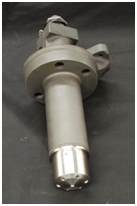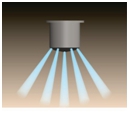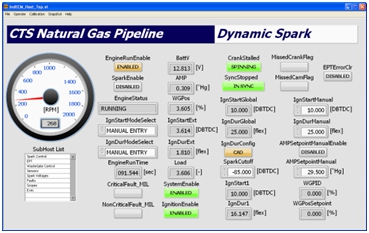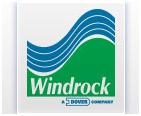Advanced Fuel Delivery
CTS NGPT high penetration fuel valves provide better fuel and air mixing to achieve  smoother and more complete combustion by mechanically injecting the fuel deeper into the cylinder. This simplistic approach achieves the goals required to provide better combustion. The high penetration fuel valves require a mild fuel header increase, usually around 120-130 lbs of pressure, which most governors and subsystems can supply without modifications.
smoother and more complete combustion by mechanically injecting the fuel deeper into the cylinder. This simplistic approach achieves the goals required to provide better combustion. The high penetration fuel valves require a mild fuel header increase, usually around 120-130 lbs of pressure, which most governors and subsystems can supply without modifications.
The Air Component
There’s a lingering problem for everyone trying to reduce NOx through lean burn methods: How do you get more air into the engine, from the turbocharger, while you reduce exhaust energy to the turbocharger? The answer is  everything counts! Just like in racing.
everything counts! Just like in racing.
CTS NGPT has designed and provides high performance turbochargers, high performance aftercoolers, high flow intake manifolds, high flow exhaust manifolds, high performance transitions and advanced insulating techniques to minim ize the losses of the air to the engine and maximize the exhaust energy to the turbocharger.
ize the losses of the air to the engine and maximize the exhaust energy to the turbocharger.
A large core direct flow aftercooler exposes more surface area to the heated air exiting the turbochargers compressor section. This will reduce the temperature of the air to the engine to provide lower combustion temperatures. Additional aftercooler radiator capacity is sometimes required. This can be accomplished with an additional “add on” radiator, cleaning of the old radiator, using a variable frequency fan and/or pump drives, shrouding of the fan for better forced air flow, or even the changing of the coolant media.
The intake manifold is designed and constructed to provide a less restricted air flow path to the cylinders. The pulsations from one cylinder to the next can reduce the amount of air available to another cylinder by creating a pulse block, a dead zone or even reverse flow known as reversion. This is minimized with additional plenum area and plenum shaping. Certain reversion techniques are employed to interfere with reversion pulses.
The exhaust manifold is constructed to combine pulsations, prevent reversion and provide smoother pressurized flow to the turbocharger. The heat energy, which is still expanding, provides mechanical energy to the turbine. Advanced coatings and insulation will provide energy retention to the turbo.
Advanced Ignition and Engine Control
CTS Dynamic Spark Ignition is controlled using a sophisticated engine management system based on National Instrument’s Compact Rio architecture. All phases of engine management from startup to shutdown can be controlled and monitored with an easy to use intuitive graphical user interface.
Continuous Engine Monitoring and AutoBalance
CTS NGPT integrates the Windrock E-Guard and AutoBalance systems in their ultra-lean burn packages which provide full time monitoring of engines and compressors. The systems employ permanently installed transducers to provide continuous measurement of machinery condition and performance. These systems are specifically designed for reciprocating engines and compressors to protect these assets against catastrophic failure by providing critical parameter values, along with associated alarms to machinery control systems. AutoBalance also provides active engine fuel control based upon combustion pressures in each power cylinder to optimize engine operation.
Power Cylinder Enhancement
CTS Natural Gas Pipeline Technologies offers power cylinder improvements that offer:
- Better piston ring seal
- Better air flow into and out of the cylinder
- Lower oil consumption
This attention to the basic details of engine performance has very large payoffs in:
- Reduced losses due to blow-by.
- Improved fuel consumption.
- Reduces or eliminates detonation zones within the cylinder.
- Improved oil change intervals.
- Improved maintenance periods.
CTS NGPT accomplishes this by:
- CryoAging* cylinders – an advanced materials stabilizing process
- Honing cylinders with accurate Sunnen honing equipment and stress plates
- Porting intake and exhaust ports for better flow and direction
- Tighten piston ring clearances
- Reduce piston ring tension
- Increase compression ratio with piston dome
- Plasma coatings for cylinders and pistons
These techniques can provide:
- A more durable engine
- Uprated power possibilities
- Longer maintenance intervals
CTS NGPT provides camshafts for 2 and 4 cycle engines with advanced profiles and materials for:
- Air start systems
- Fuel injection
- Intake vales
- Exhaust valves
*CryoAging is a material stabilizing process developed by Joe Anderson in 1980 to address distortion in fabricated or cast components. It has been widely adopted in many industries to improve the life cycle and dimensional stability of many materials.




